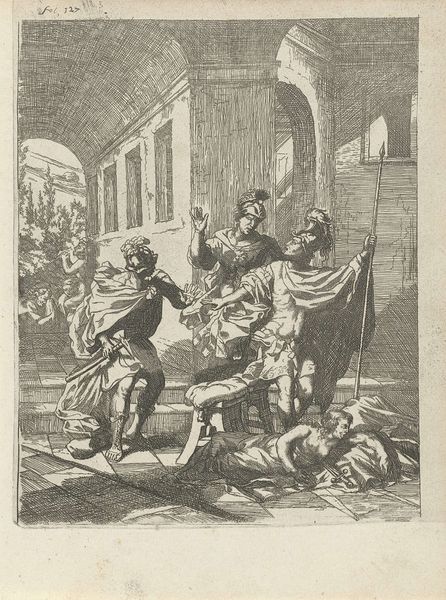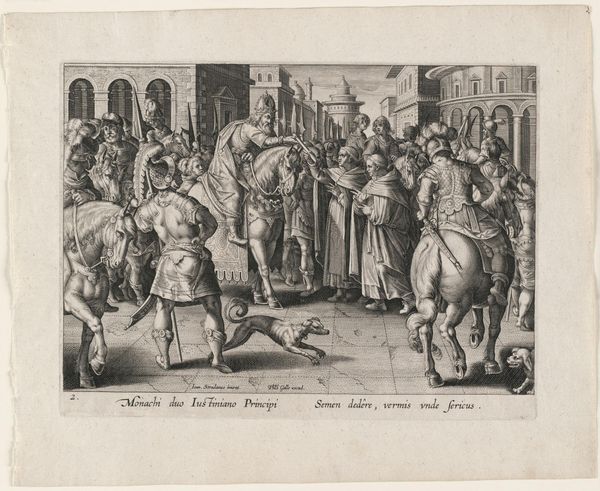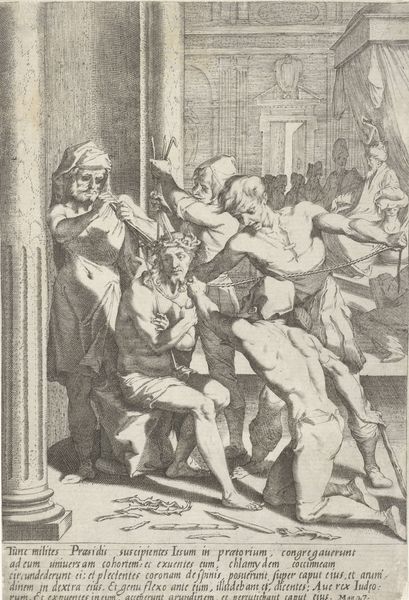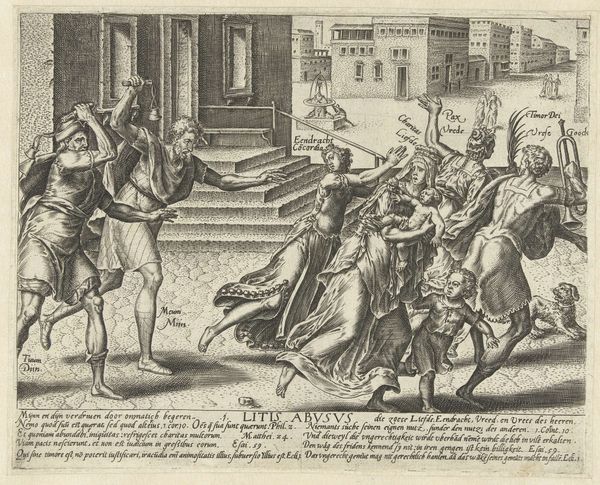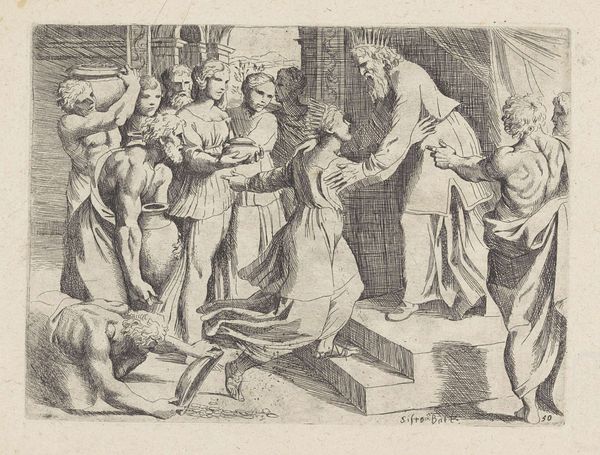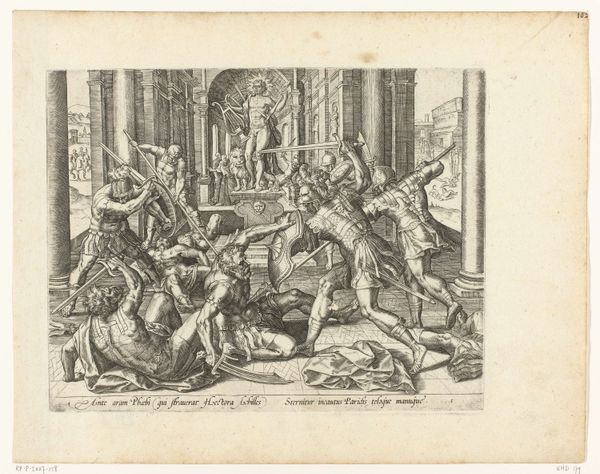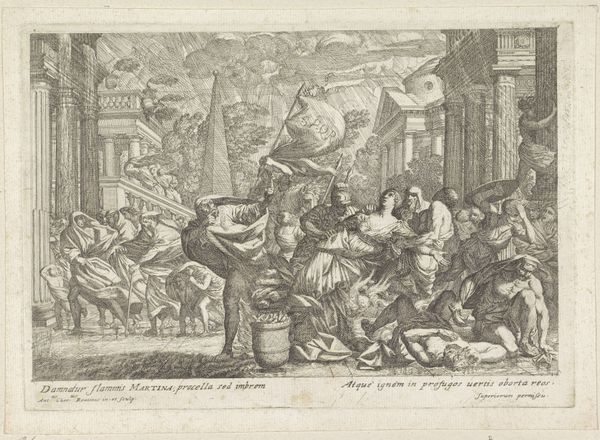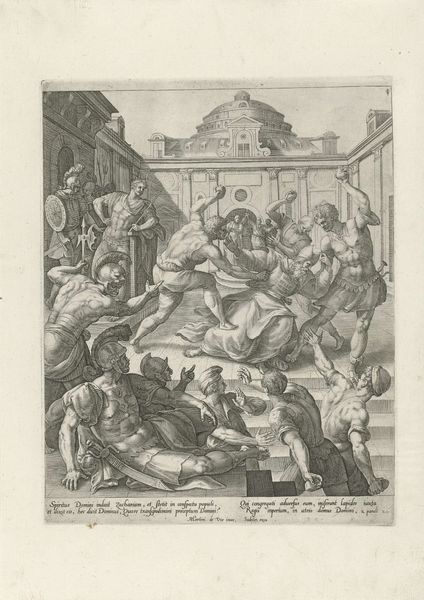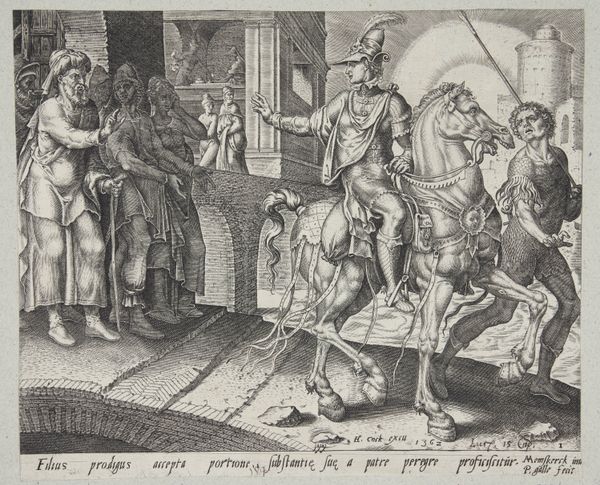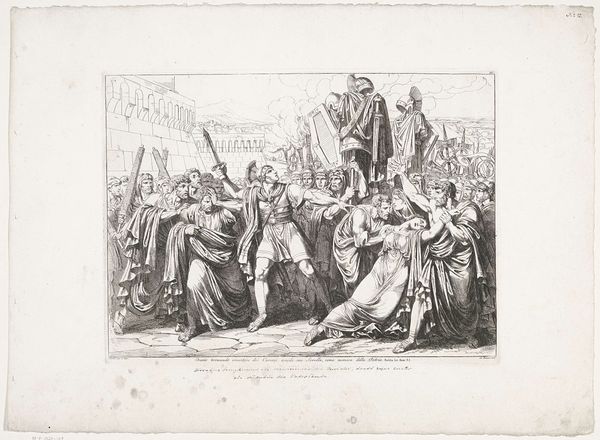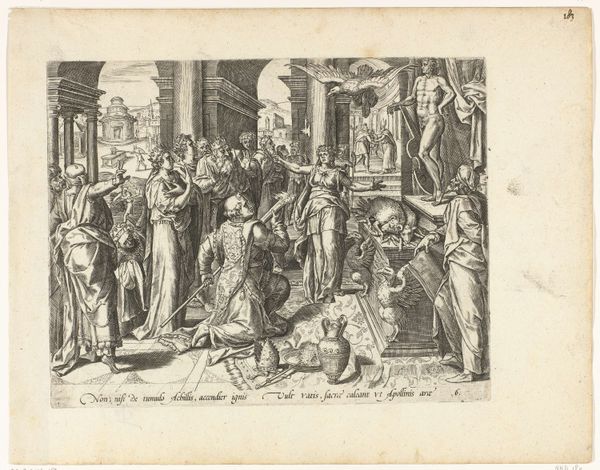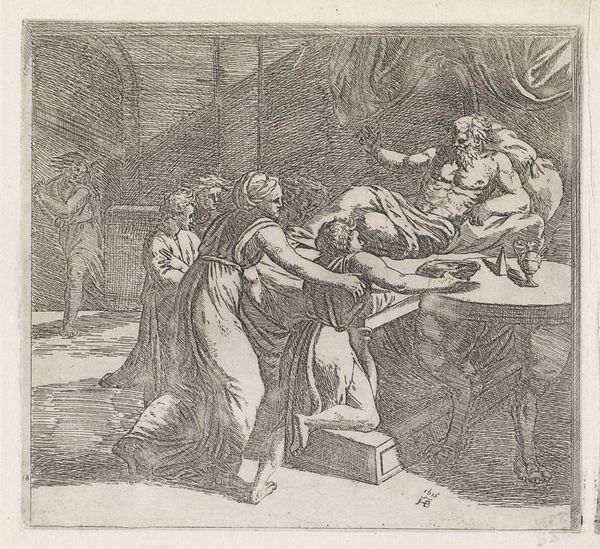
print, engraving
#
narrative-art
#
baroque
# print
#
figuration
#
history-painting
#
engraving
Dimensions: height 149 mm, width 175 mm
Copyright: Rijks Museum: Open Domain
Curator: Here in Gallery 207, we're looking at "Salomo bouwt de tempel in Jerusalem" – "Solomon Building the Temple in Jerusalem." It’s an engraving dating to 1615, attributed to Orazio Borgianni. It depicts the construction of Solomon’s Temple. Editor: Immediately, I'm struck by the energy. There's a frenetic quality, a real sense of labor, of bodies straining, even within the tight constraints of the print medium. The human figures are prominent. Curator: Absolutely. Borgianni was working within the Baroque idiom here, and he very intentionally uses the print medium to capture something very monumental. If you consider that art was largely within the service of political and religious institutions, in his moment, the choice to portray physical labor and attribute it to the construction of holy structures seems notable. Editor: It's the hierarchy that gets me. Up high, you see Solomon and his court, presumably directing the whole operation. And then below, these intensely rendered, muscular figures are toiling, and there is not a lot of care implied for their wellbeing or compensation. How does it challenge or perpetuate traditional power structures within its religious context? Curator: It is useful to remember this work appeared during a period of significant social and political upheaval, where labor practices were highly contested. The figures and the print might well represent anxieties of social change but filtered through biblical narrative, a safe vehicle. It doesn't take long to start thinking about forced labor around the world. Editor: Yes! There's also this element of staged presentation. The toil appears for the purpose of divine structures— legitimizing and almost romanticizing oppression in the process of immortalizing a moment that represents something monumental in society. What I think becomes important in contemporary reflections is the power behind such renderings, that could then continue forward in a number of related structures to this very day. Curator: The print itself, with its wide distribution, also contributes to that normalization, propagating the image of divinely sanctioned hierarchy. Editor: Exactly, even something seemingly straightforward is so incredibly nuanced with power structures. It serves as a potent reminder of the historical entanglement of art, religion, and socio-economic dynamics. I feel a lot more aware than when I started. Curator: A powerful reflection for me also. Thank you. Let's move along to the next piece, shall we?
Comments
No comments
Be the first to comment and join the conversation on the ultimate creative platform.
